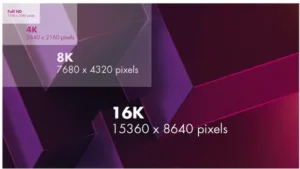When Chinese brand OnePlus 7 Pro, launched in May of this year, is new smartphone display was crowned King of the Hill, receiving this top ranking, along with 10 record breaking display performance accolades in the most recent display industry smartphone shoot-out. We have now achieved studio reference monitor display quality with calibration that is “virtually indistinguishable from perfect,” according to Dr. Ray Soneira, head of DisplayMate Labs.

From the DisplayMate review: “The OnePlus 7 Pro has a very high resolution 3K 3120×1440 pixel display with 516 pixels per inch (ppi) producing images that look perfectly sharp with normal 20/20 Vision under all normal viewing conditions, which always includes some ambient light that always lowers the visible image contrast and perceived image sharpness (Modulation Transfer MTF). Note that displays are almost never viewed in absolute darkness under perfect viewing conditions with ideal image content.”
But if you have been following the display industry shoot-outs, this is not the first time a display has reached these heights. In fact, for the smartphone, tablet size (and up) viewing public has seemingly experienced a continual series of display performance record breaking results, “A+” display assessment grades and a new DisplayMate “best display awards”, with every subsequent shoot-out.
So does this portend the end of the industry’s trek toward display nirvana? Well not quite. As Soneira puts it display makers must turn their focus away from higher pixel counts that go way beyond what human visual acuity can discern, and toward improving display performance for “real world” ambient light viewing conditions.
To be more specific, Soneira says:
“Some clueless reviewers have been pining for 4K 3840×2160 Smartphones, which would require almost double the pixels, memory, and processing power of the 3120×1440 display on the OnePlus 7 Pro, but there would be no visual benefit for humans! As a result, it is absolutely pointless to further increase the display resolution and pixels per inch (ppi) for a marketing wild goose chase into the stratosphere, [again] with no visual benefit for humans!”
To this point, what good is a record breaking visually indistinguishable from perfect smartphone or tablet display if all you see when you take it outside, is a cosmetic mirror quality image of your face?
Again to quote Soneira, “With screen size and resolution already functionally maxed out, manufacturers should instead dedicate their efforts and resources into improving real world display performance in ambient light by using advanced technology to restore and compensate for the loss of color gamut, color saturation, and image contrast due to ambient light, something that every consumer will benefit from, and will also immediately notice and appreciate – providing a true sales and marketing advantage…
Outdoor viewing is the bane of every device user, it’s perhaps the number one complaint of every smartphone display device maker (OK, there’s power and price, but it should be), and most importantly, the single most powerful way to distinguish a next generation product from the crowd. And while the debate over the benefits of continuing the resolution race beyond 4K and up is still open, there is no doubt improvements in outdoor viewing can create a tremendous benefit to us all. More on this topic to come – Stephen Sechrist
Samsung Electronics Underscores Its Commitment to 8K Technology at QLED Summit in New York
8K – It’s Not Just About More Pixels
8K Display Summit June 11, Millennium Times Square, New York City
Gartner Says Global Smartphone Sales Declined 2.7% in First Quarter of 2019
Google Pixel 3a ‘Good Enough’ Smartphone Strategy
Analyst Comment
Ray has no peer in terms of his fastidiousness in measuring displays, in my experience. However, his views on human vision and the desirability of higher resolutions does not match mine or of others including Candice Brown-Elliot, the display and human factors specialist that was the inventor of the Pentile Matrix technology used by Samsung in its OLED smartphone displays. As Ken wrote last week, there are issues such as vernier acuity that go way beyond ’20/20 vision’. (8K TV: More Than Just Pixels), Of course, we are into the area of ‘diminishing returns’ and the fact that nobody has followed Sony in going to UltraHD resolutions on smartphones suggests that there is only limited value in higher resolutions at the moment.
Ray also dismisses out of hand the use of smartphones as VR headsets. While Ray may not care about this, my grandchildren like to borrow my Note9 and Galaxy VR when they visit me! (BR)

